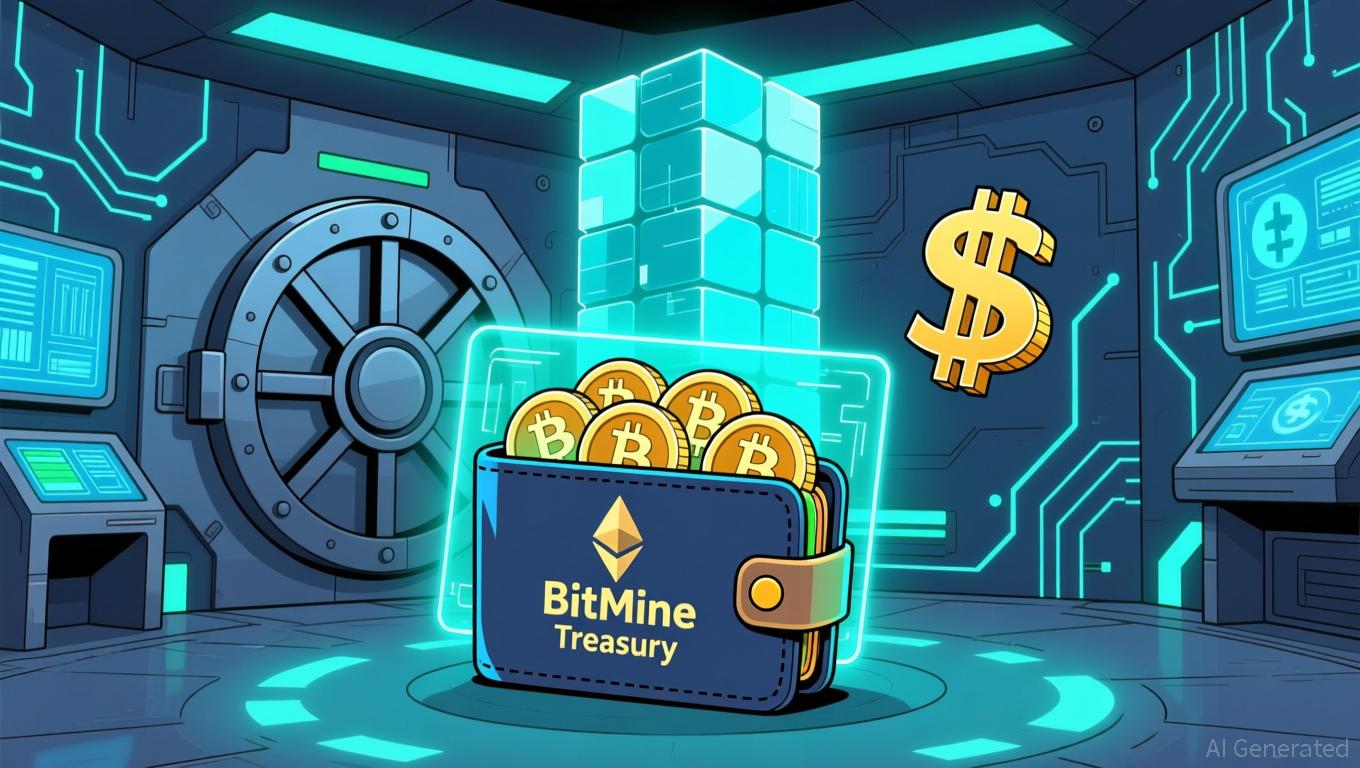Ethereum News Update: BitMine Targets '5% Alchemy' While Ethereum Treasury Exceeds $11.2 Billion
- BitMine (BMNR) holds 3.63M ETH (3.0% supply), becoming the world's largest Ethereum treasury with $11.2B in crypto/cash assets. - Recent 69,822 ETH purchase and institutional backing from ARK, Kraken, and Galaxy support its "Alchemy of 5%" goal to acquire 5% ETH supply. - Despite 40% ETH price drop causing $4B unrealized losses, BitMine plans 2026 staking infrastructure launch amid evolving crypto regulations. - As second-largest crypto treasury after MicroStrategy, BitMine's rapid ETH accumulation and l
BitMine Immersion Technologies (NYSE AMERICAN: BMNR) has established itself as the world's largest

In just the past week, BitMine acquired an additional 69,822 ETH tokens, highlighting its assertive approach to accumulation. The company’s Ethereum assets are valued at $2,840 per token
BitMine’s strong institutional support further strengthens its standing in the market. The company counts prominent backers such as ARK’s Cathie Wood, Pantera, Kraken, and Galaxy Digital among its investors, as well as Fundstrat co-founder Thomas "Tom" Lee.
Despite its rapid expansion, BitMine is not immune to challenges in the wider crypto sector.
The company’s growth has attracted considerable attention.
With its annual shareholder meeting planned for January 15, 2026, at the Wynn Las Vegas, BitMine is looking to further cement its influence in the digital asset space.
Disclaimer: The content of this article solely reflects the author's opinion and does not represent the platform in any capacity. This article is not intended to serve as a reference for making investment decisions.
You may also like
The ICP Caffeine AI Boom: Exploring How the Integration of AI and Blockchain is Transforming Early-Stage Investment Environments
- ICP Caffeine AI's token surged 45% to $5.20 in Nov 2025, driven by its decentralized AI platform enabling app creation from text/image/code prompts. - The platform reduces AI inference costs 20-40% via "chain-of-chains" architecture and reverse-gas model, challenging centralized cloud providers with scalable, censorship-resistant compute. - Despite $237B TVL growth in Q3 2025, 22.4% dApp activity decline highlights adoption challenges, while market fragmentation and sector volatility test its long-term v

Internet Computer's Latest Rally: Is This the Beginning of a New Era for On-Chain Governance?
- Internet Computer (ICP) 2025 upgrades like Fission/Stellarator boosted computing power by 50%, enabling enterprise-scale blockchain solutions rivaling AWS/Azure. - Active Liquid Democracy governance model transformed token staking into a revenue-generating mechanism, attracting 1.2M+ wallets and institutional capital. - Strategic partnerships with Microsoft , Google Cloud, and Aduna-Comviva expanded ICP's enterprise utility, achieving $237B TVL and 7,000+ global business clients. - Developer tools like C

Exodus Purchases W3C to Connect Cryptocurrency Assets with Daily Expenditures
- Exodus Movement Inc. agreed to acquire W3C Corp for $175M to integrate card/payment processing into its crypto wallet platform, enabling stablecoin transactions via Visa , Mastercard , and Discover. - The deal aims to create an end-to-end on-chain payment ecosystem by reducing third-party reliance and generating recurring revenue from interchange fees, supported by Exodus's Bitcoin-backed financing. - Projected to close in 2026 after U.S./U.K./EU regulatory approvals, the acquisition follows Exodus's sta
Fed Split Over December Rate Reduction: Employment Concerns Versus Inflation Targets
- Fed President Mary Daly advocates for a December rate cut to preempt sudden U.S. labor market deterioration, prioritizing job market risks over inflation. - Officials like Susan Collins and Christopher Waller show divided stances, with some favoring rate cuts as insurance against weakness while others urge caution to avoid limiting future flexibility. - The debate reflects broader FOMC tensions between stabilizing employment and curbing inflation, amid softer tariff-driven costs and a fragile "low-hiring